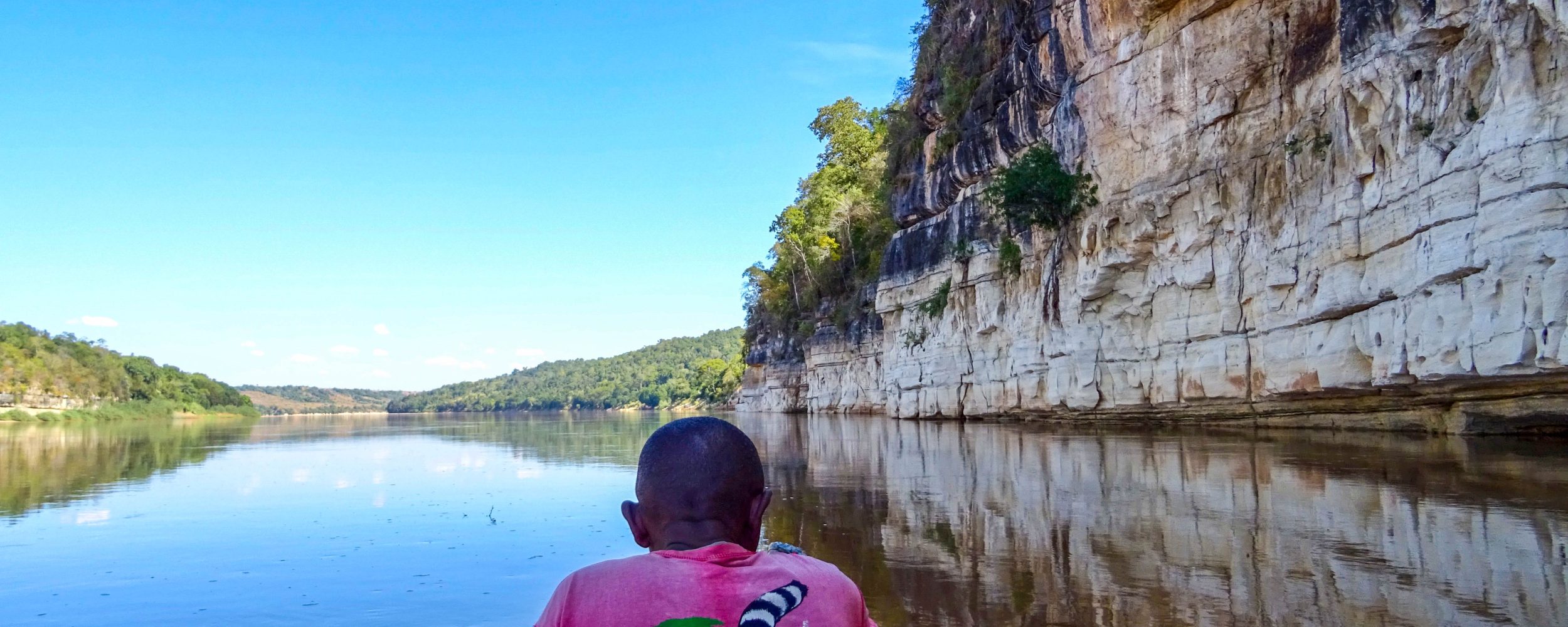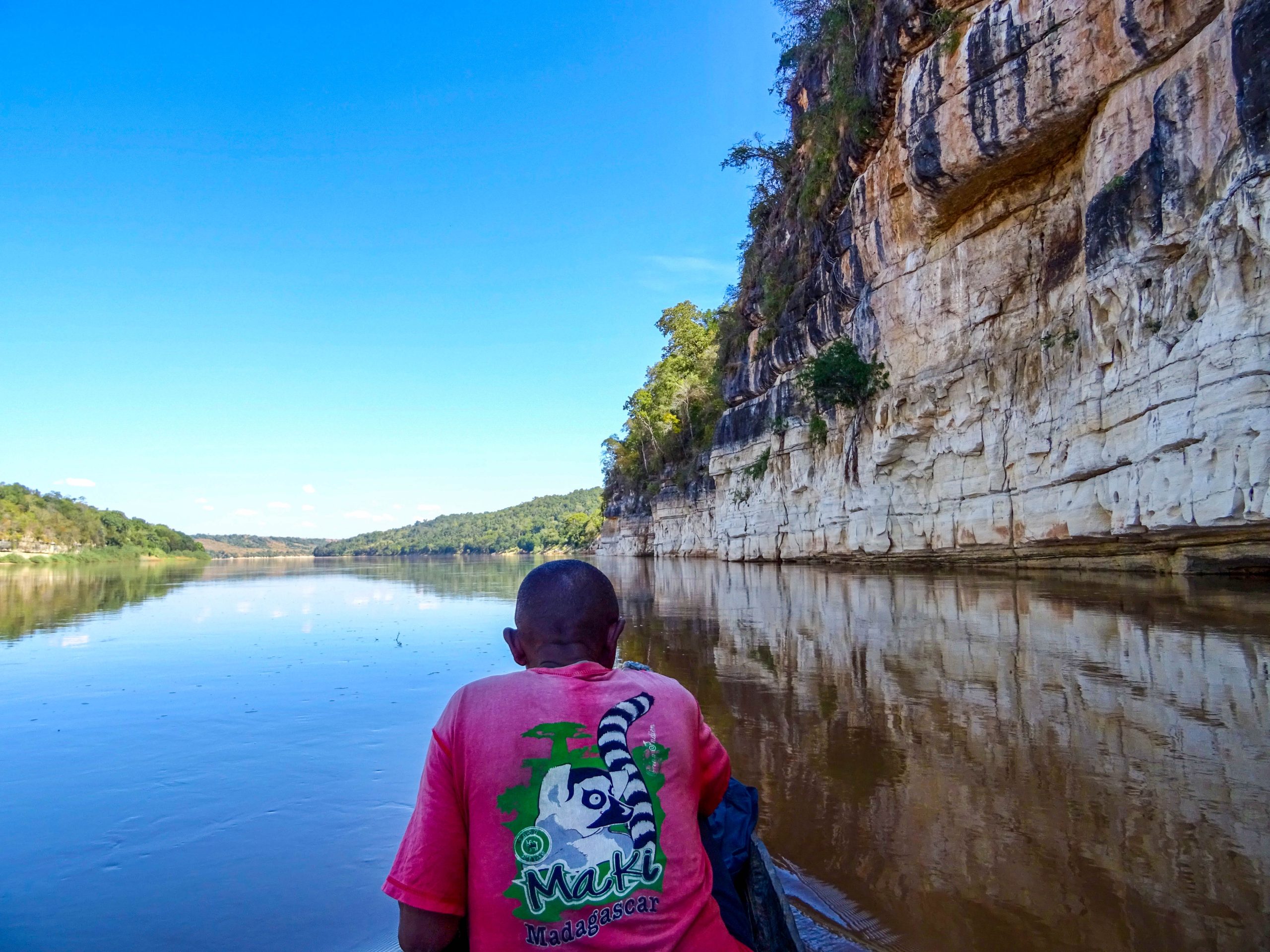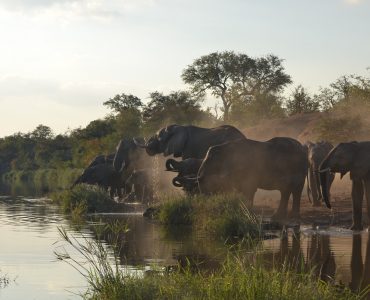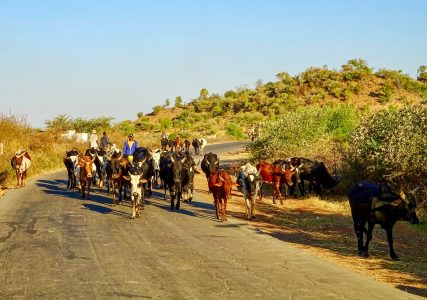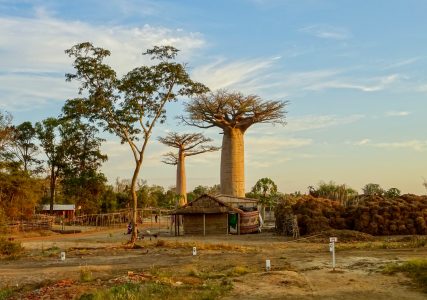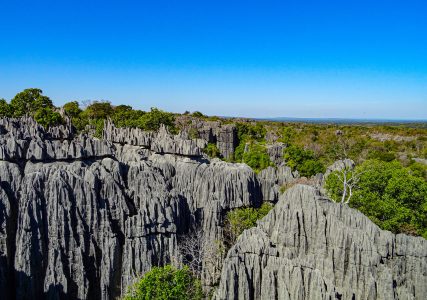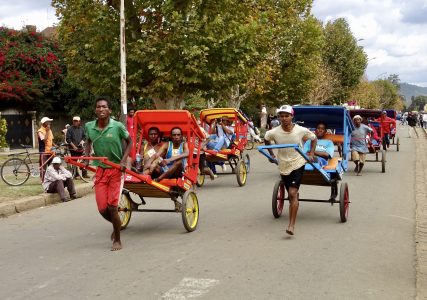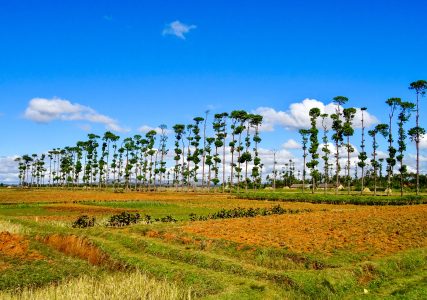Who gets it in their head to buy a second-hand scooter in the capital of Madagascar to buy? To travel more than 4.000 km over this enormous island? No one before me had ever come up with this idea. I just did it and discovered the real Madagascar. Travel with me to the Red Island and get to know the baobabs, lemurs, chameleons, snow-white beaches and above all the hospitable Malagasy: TONGA SOA. In this part I travel by canoe on the Tsiribihina river. Compared to the exhausting scooter rides, the canoe trip on the Tsiribihina River is an extremely relaxed experience.
Also read:
- Madagascar on a scooter | Part 1 | Antananarivo (Tana) – introduction
- Madagascar on a scooter | Part 2 | Antananarivo (Tana) – Antsirabe (175 km)
- Madagascar on a scooter | Part 3 | Antsirabe – Miandrivazo (220 km)
- Madagascar on a scooter | Part 4 | Tsiribihina river canoe trip – Belo-sur-Tsiribihina
- Madagascar on a scooter | Part 5 | Excursion + Boat Trip in Bekopaka and Tsingy
- Madagascar on a scooter | Part 6 | Belo-sur-Tsiribihina – Kirindy Village (60 km)
- Madagascar on a scooter | Part 7 | Spotting Baobabs & Kimony Resort
- Madagascar on a scooter | Part 8 | Morondava – Malaimbandy (155 km)
- Madagascar on a scooter | Part 9 | Malaimbandy – Antsirabe – Ambositra (450 km)
Preparing for the canoe trip on the Tsiribihina River
Gilbert, my guide, is in the courtyard of Hotel Baobab at nine o'clock. There he has set up the tent, in which I will spend the next two nights. "The ATM is refilled," he says.
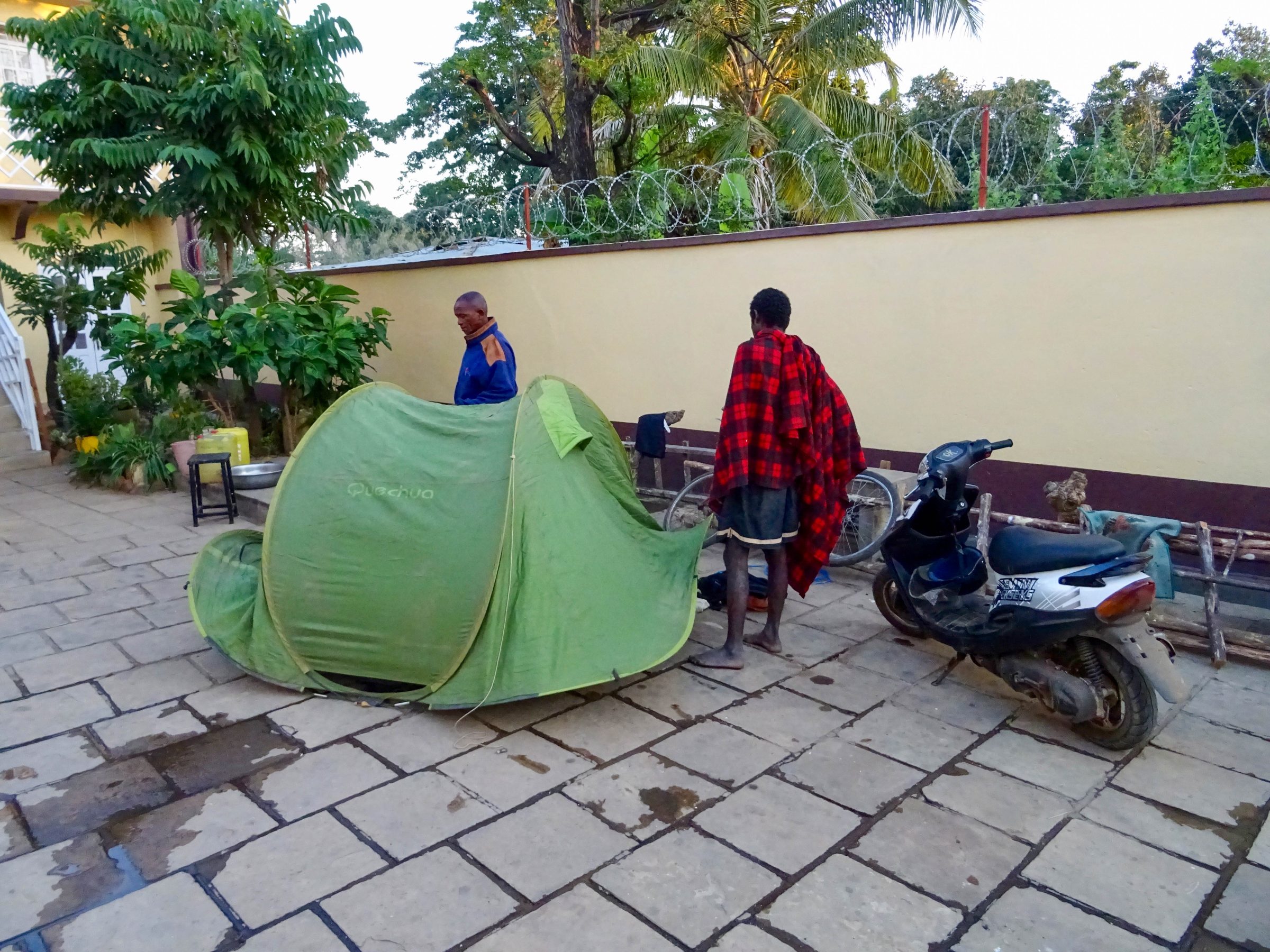
At the ATM of the Bank of Africa I want to withdraw 1,2 million Ariary (about 300 Euros), but the machines in Madagascar only give a maximum of 40 notes at a time. In Madagascar, a 10.000 Ariary note is the largest banknote. That is converted 2,5 Euros. So I have to pin three times to get a huge pile of 120 banknotes. (In 2018, the 20.000 Ariary banknote was introduced).
Back at hotel Baobab Gilbert is busy with the provisions for the trip. “Eric, can you pay me the 600.000 Ariary for the trip? Then I can pay for the groceries.'
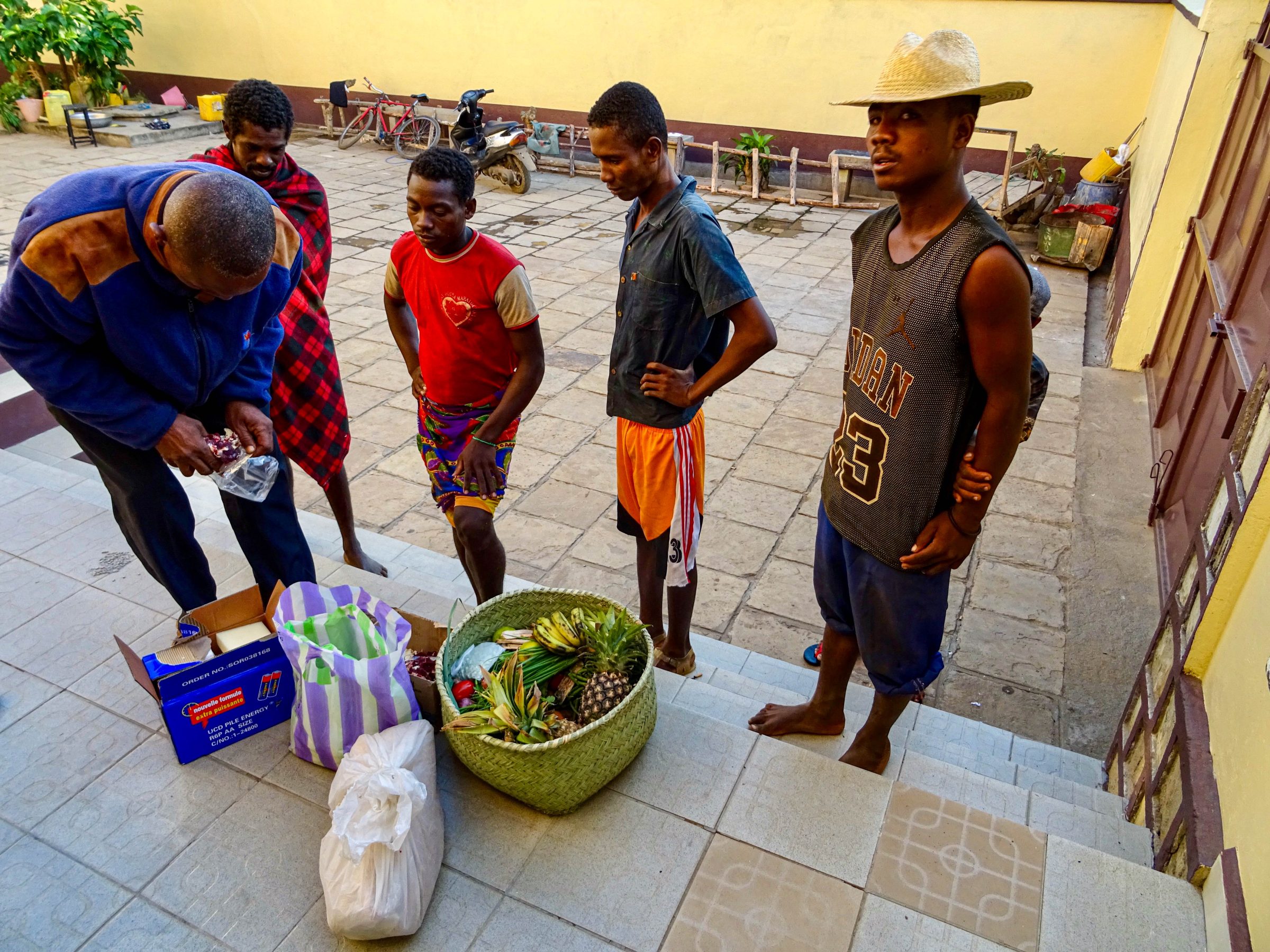
The scooter in the canoe and let's go
On the bank of the Tsiribihina river I look in amazement at the narrow canoe (pirogue) that lies in the water. 'And that's where the scooter has to go in?' 'Yes and you, me, all the provisions and two paddlers. Don't worry, it all fits in the pirogue.' Four guys then grab my scooter and hoist it into the pirogue. Five minutes later, the pirogue is packed and ready to go.
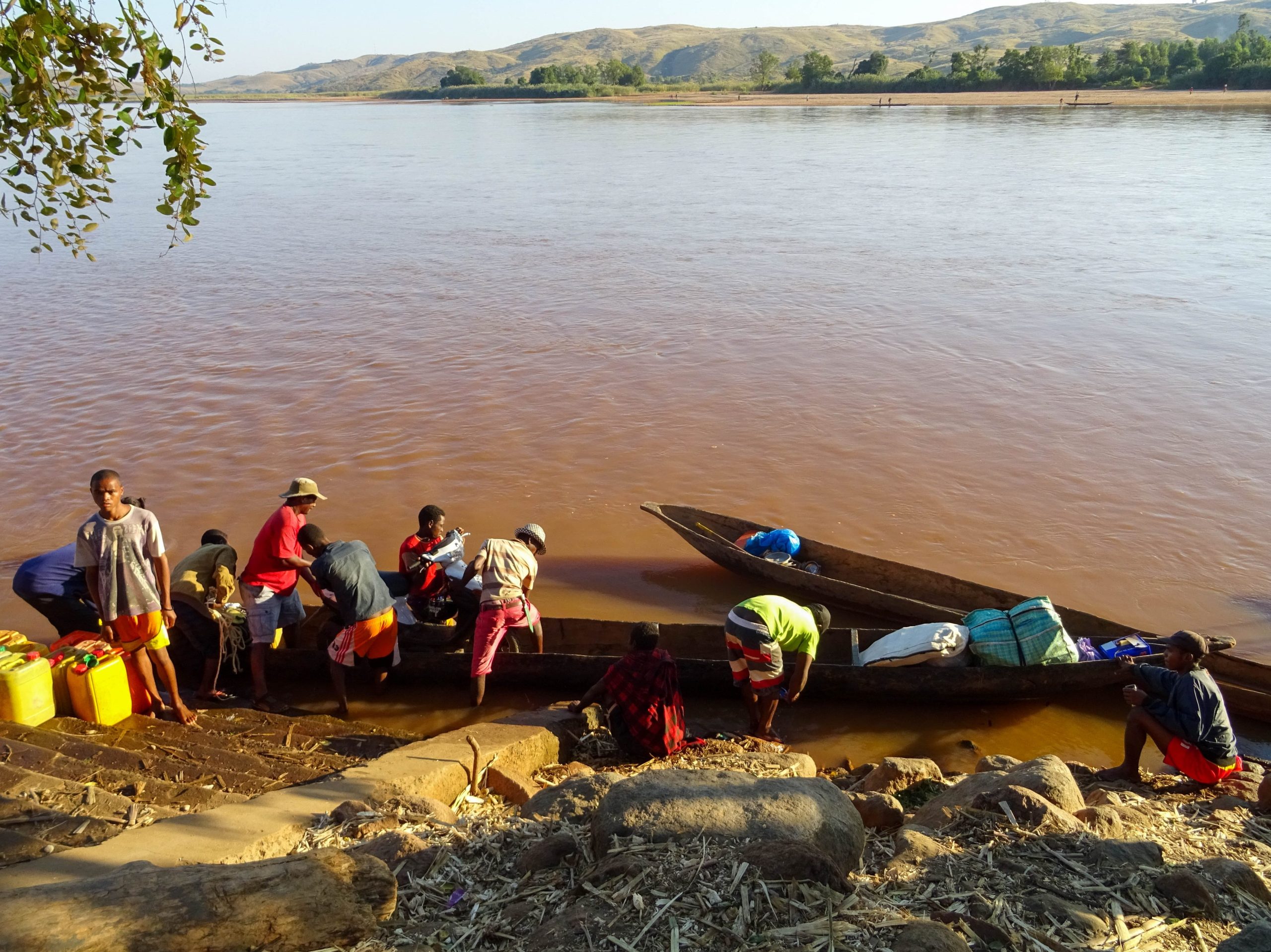
After an hour on the river we make a first stop. I'm ready, because you're constantly in the same position. Just stretch your legs. Gilbert discovers a chameleon on a branch and points to it. I grab him right away. The two paddlers look up startled. They startle when the chameleon tries to bite me. 'Handling a chameleon is 'fady' for Malagasy. Fady is taboo. You do see children here with chameleons, but they always keep them on a stick or branch and never in their hand. It brings bad luck. Malagasy are very superstitious,' explains Gilbert.
'Another fady is that people from western Madagascar don't point a finger at anything or anyone. If you want to point to something, you do it with your whole hand.'
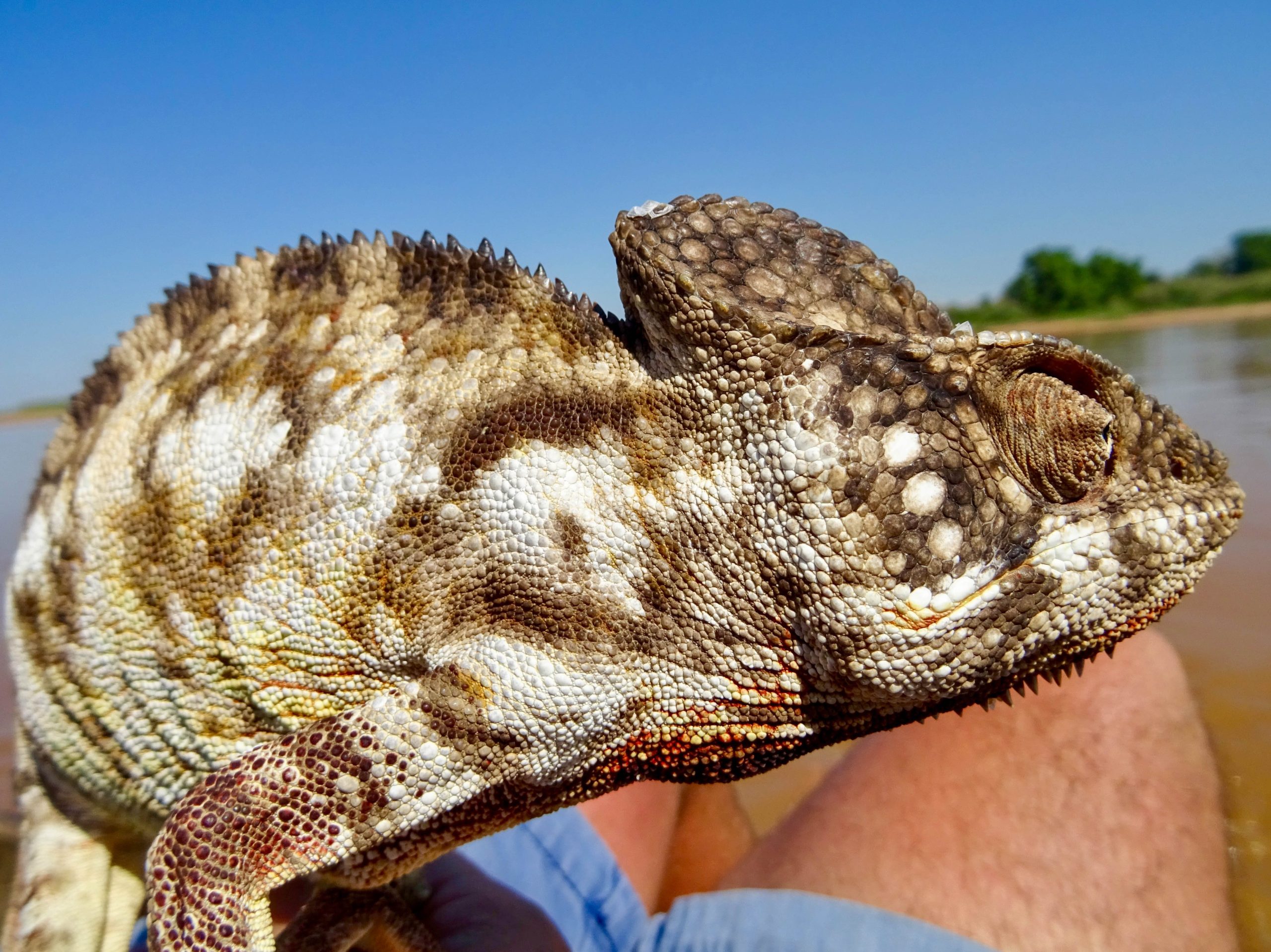
The first night in a tent along the Tsirihibina river
Compared to the tiring rides on a scooter, the canoe trip is an extremely relaxed event. Every now and then we meet a few fishermen, a row of huts on the bank and children waving. For the rest you can enjoy the tranquility and the view of the river and the hills. We do not encounter much traffic on the river. Just a canoe with a fisherman I counted.
Towards evening Gilbert orders his two paddlers to tie up the canoe on the bank. A few children and a dog are waiting for us there. Gilbert makes a campfire and that is convenient, because it cools down quickly. Around the fire we eat roasted fish with rice. At nine o'clock I leave for my tent, while my three companions wrap themselves in a cloth on the sand.
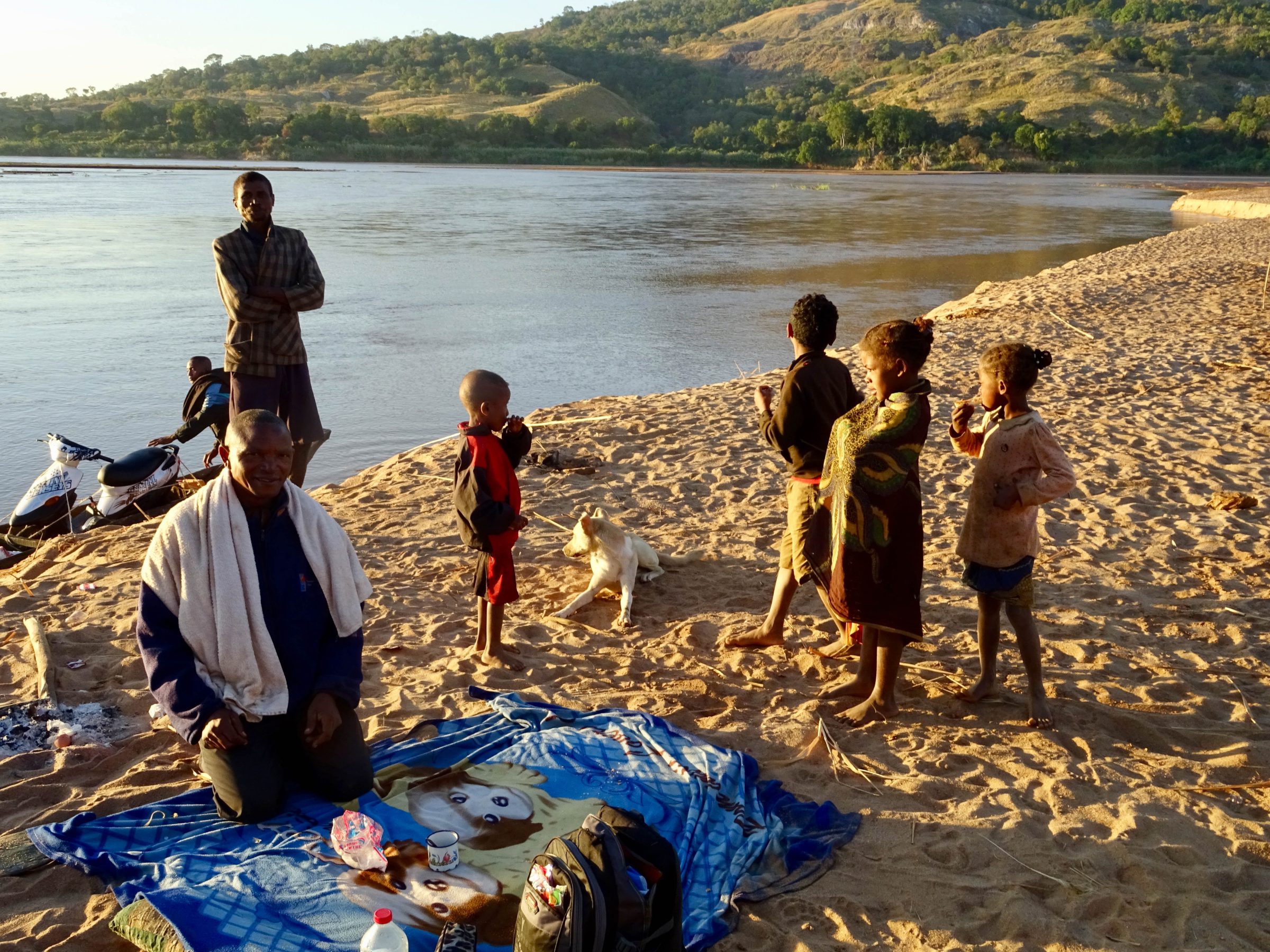
A shallow river and the Anosimpela waterfall
After breakfast I take a refreshing dip in the river. Then we paddle further and regularly get stuck at the bottom of the shallow river.
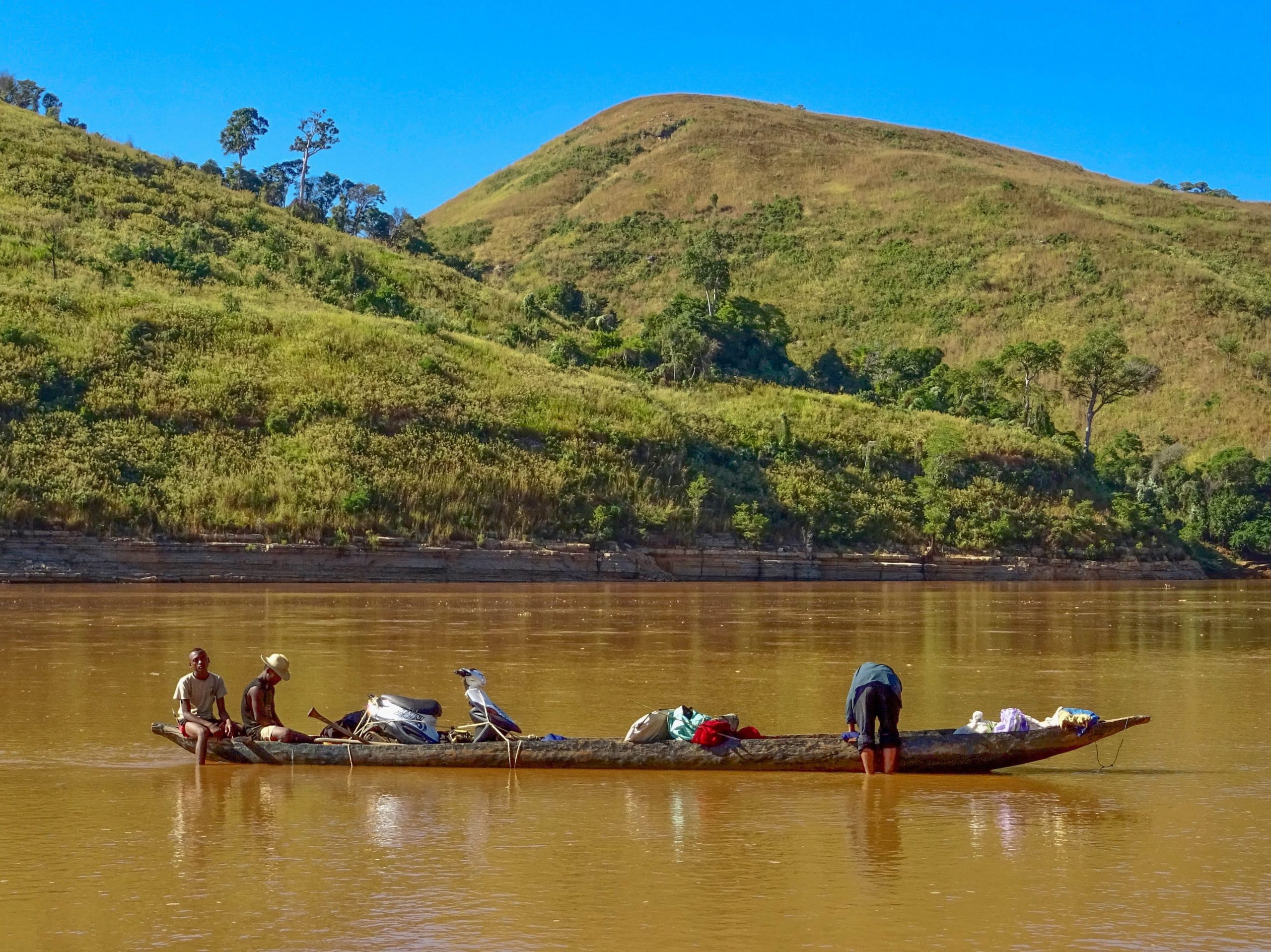
Around noon we moor at the Anosimpela waterfall. Six guards welcome me. "Salama," they greet. Gilbert points me to the guestbook, which all guides who visit the waterfall must complete and sign. A glance at the book tells me that there have been hardly any tourists in recent weeks.
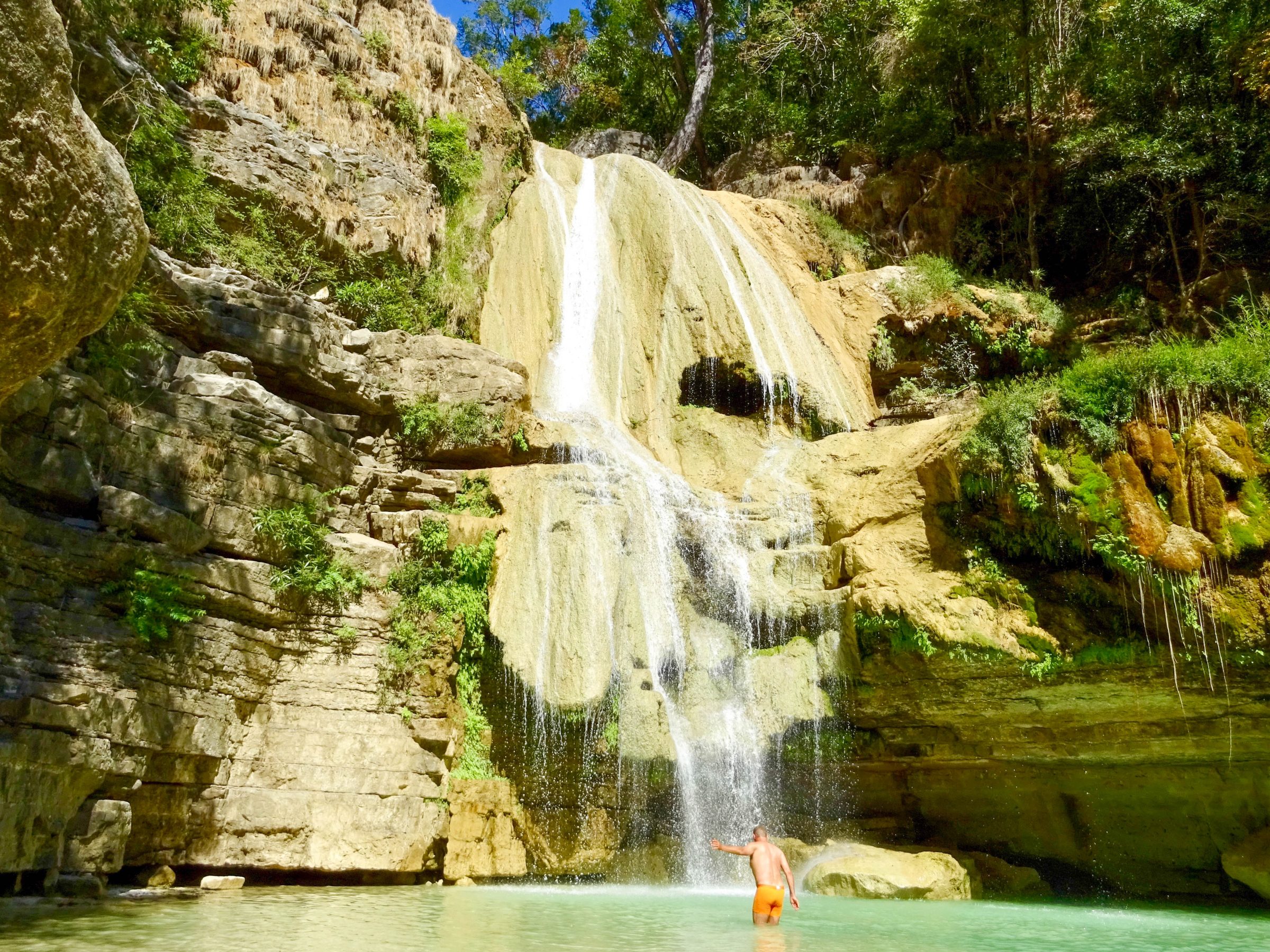
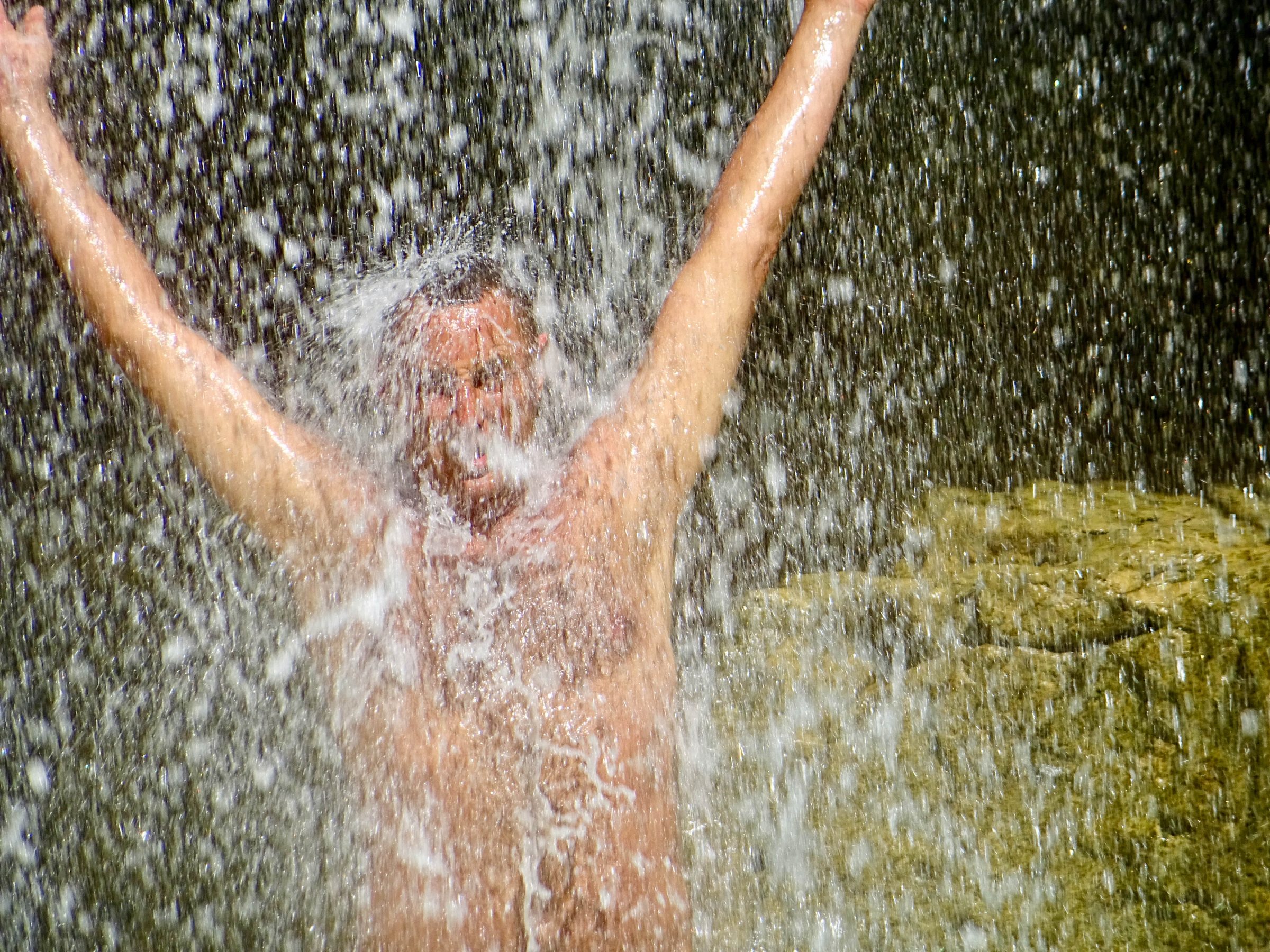
'The canoe trip is almost always combined with a visit to Tsingy. Tsingy can only be reached from mid-May. Before that, the road was flooded in many places and even XNUMXxXNUMX vehicles could not reach Tsingy. Then there is no interest in the canoe trip either,' explains Gilbert.
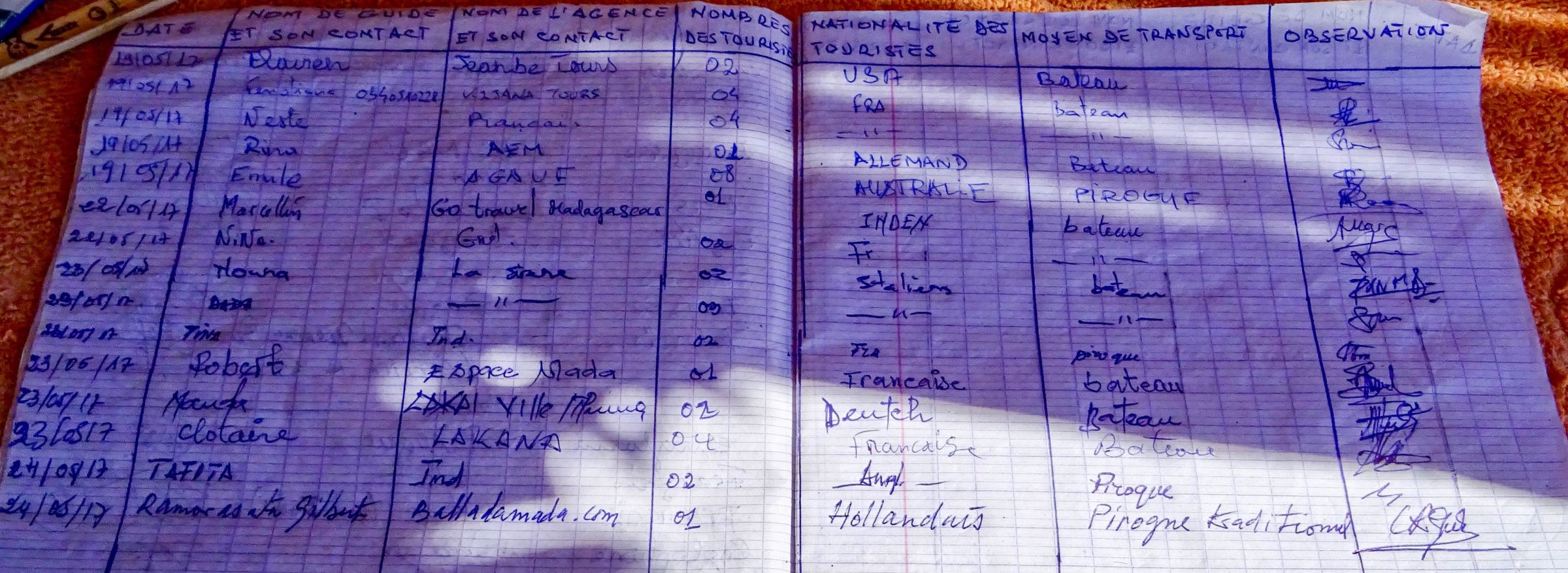
A relaxed day on the Tsiribihina river with a surprising dinner
The rest of the afternoon we chatter quietly on. The two paddlers have little work, because the current in the river provides enough speed. After the chalk rocks near the Anosimpela waterfall, the landscape is green and fairly flat.
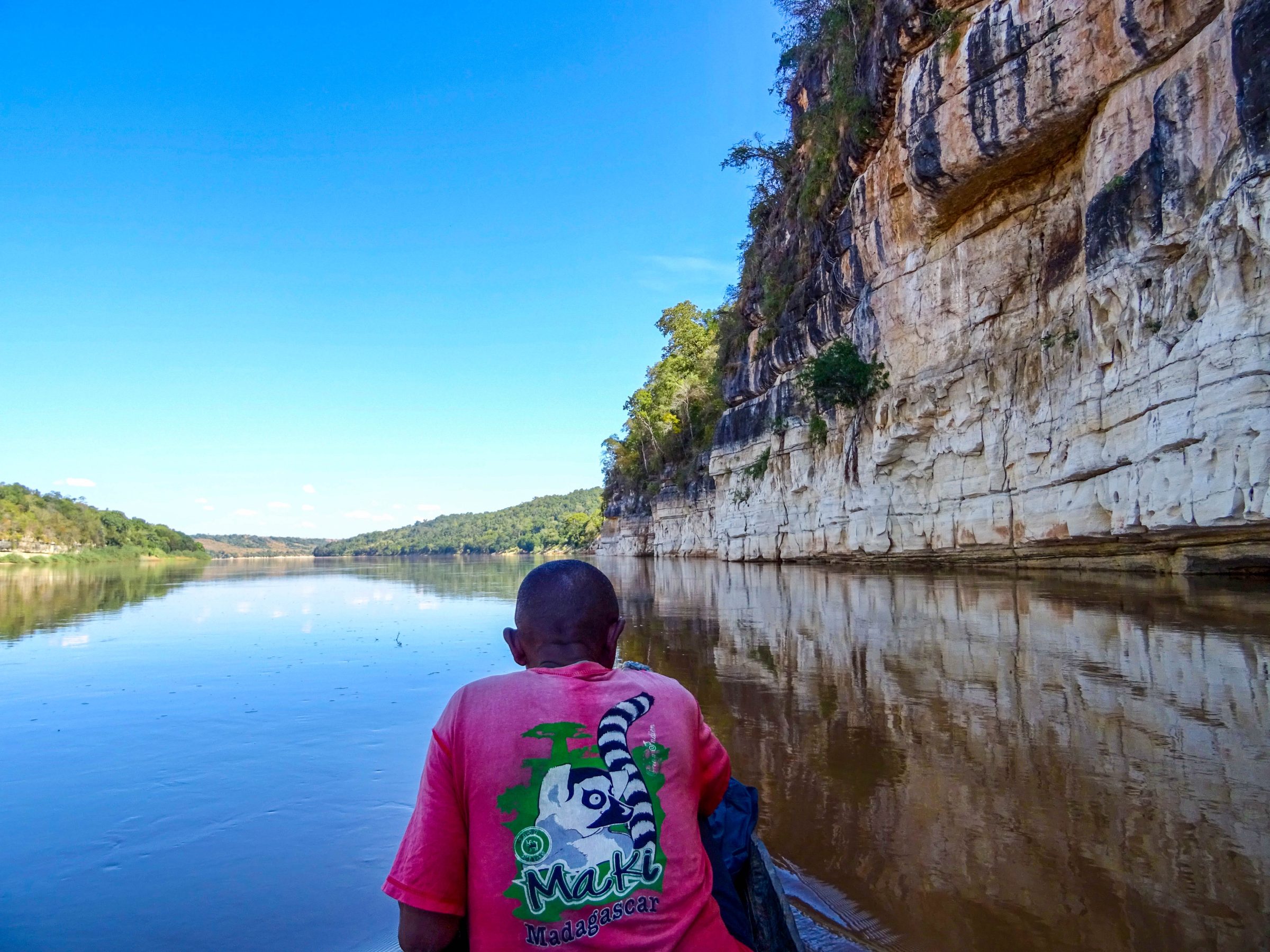
Towards the end of the afternoon we meet a fisherman from a village near Belo-sur-Tsiribihina. He has been fishing for two days and is sleeping somewhere on the riverbank at night.
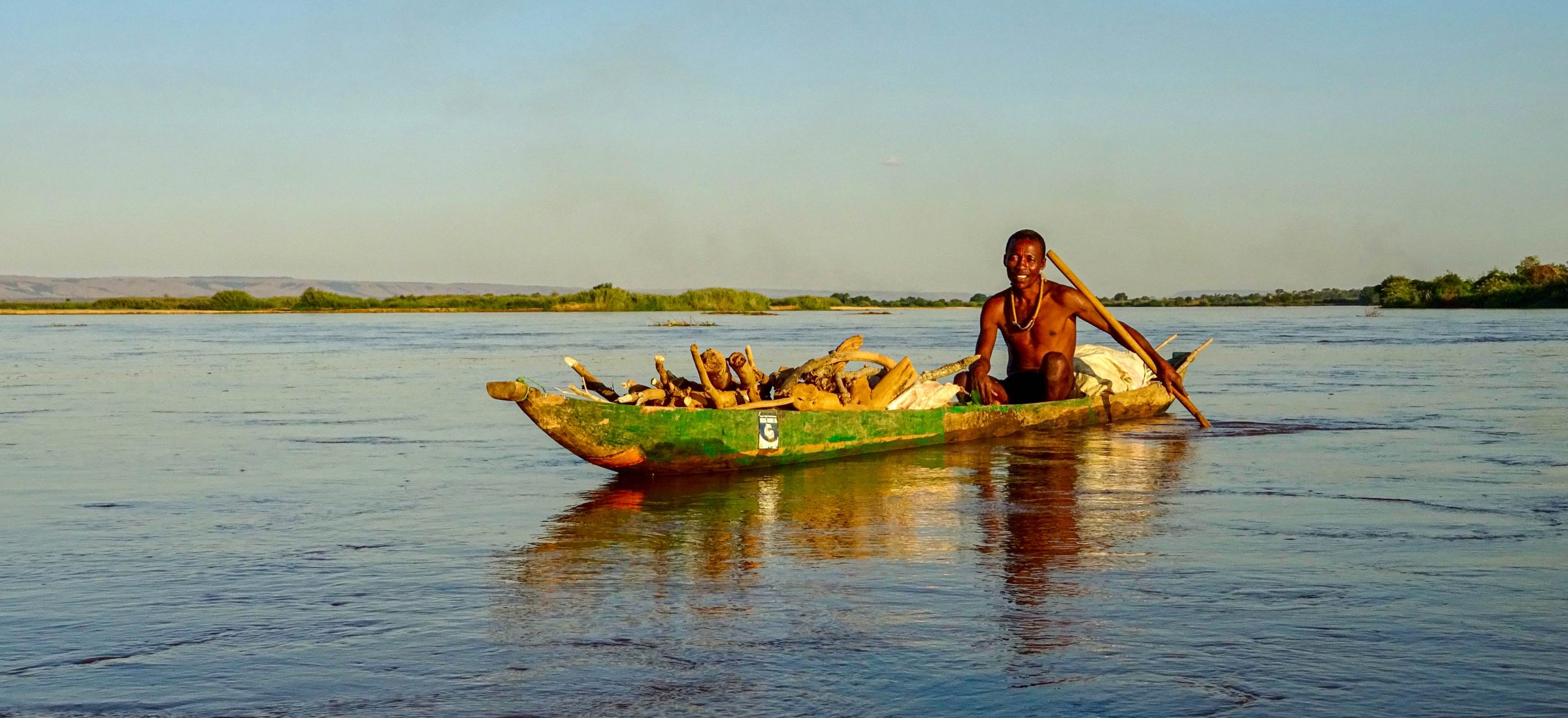
The fisherman has a very infectious smile. Every time he says something in Malagasy he bellows. Even though I have no idea what he's spouting, I can't contain my laughter. “Eric, he's asking if he can keep us company tonight. He finds that very pleasant. In return we get freshly caught fish.' "Very well," I answer.
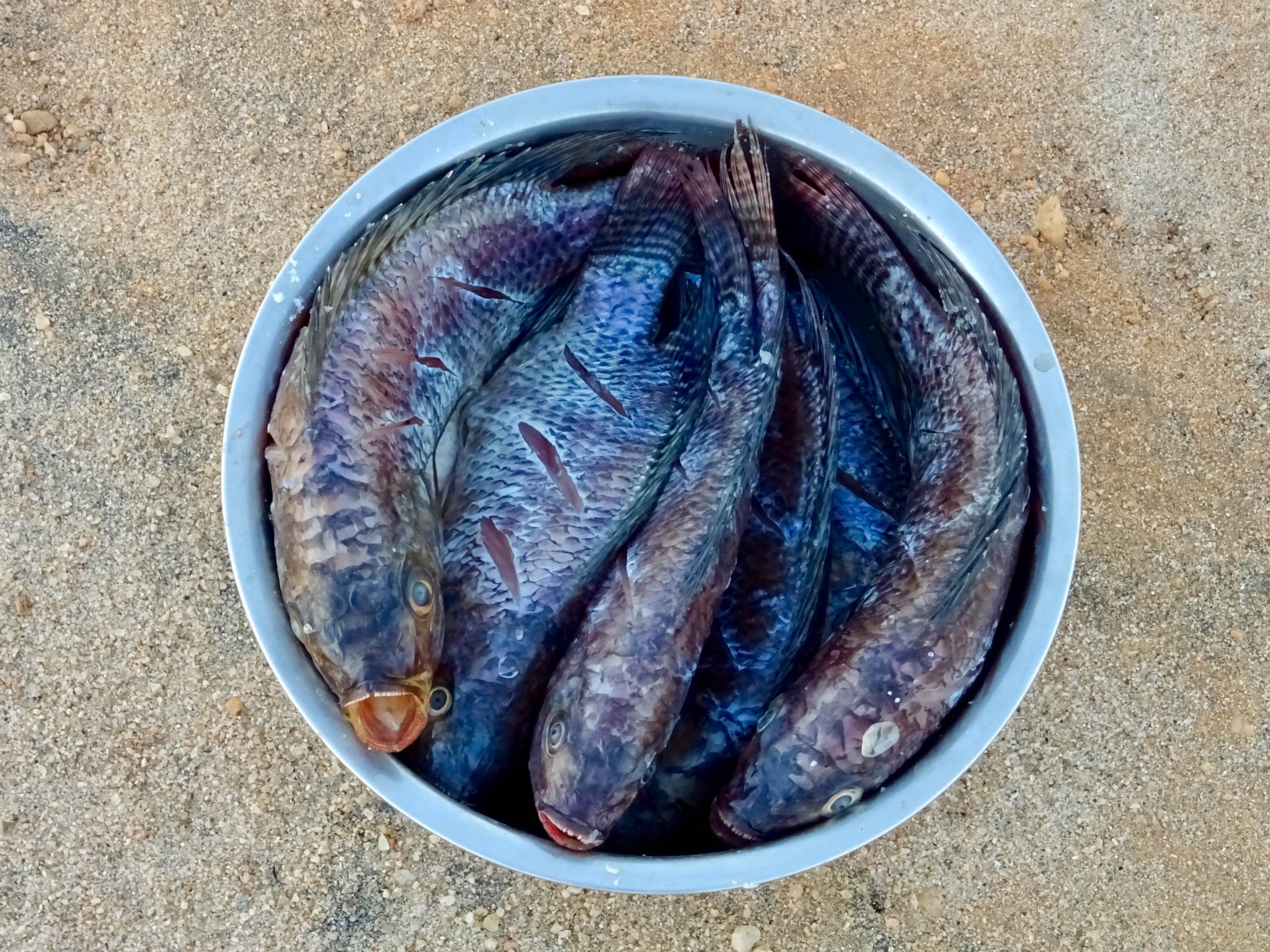
It is laughing, howling and howling around the campfire. The fisherman has conjured up a one and a half liter bottle of spirits for the day. The bottle is in great demand and creates an excellent mood. Then it's time to eat the grilled fish.
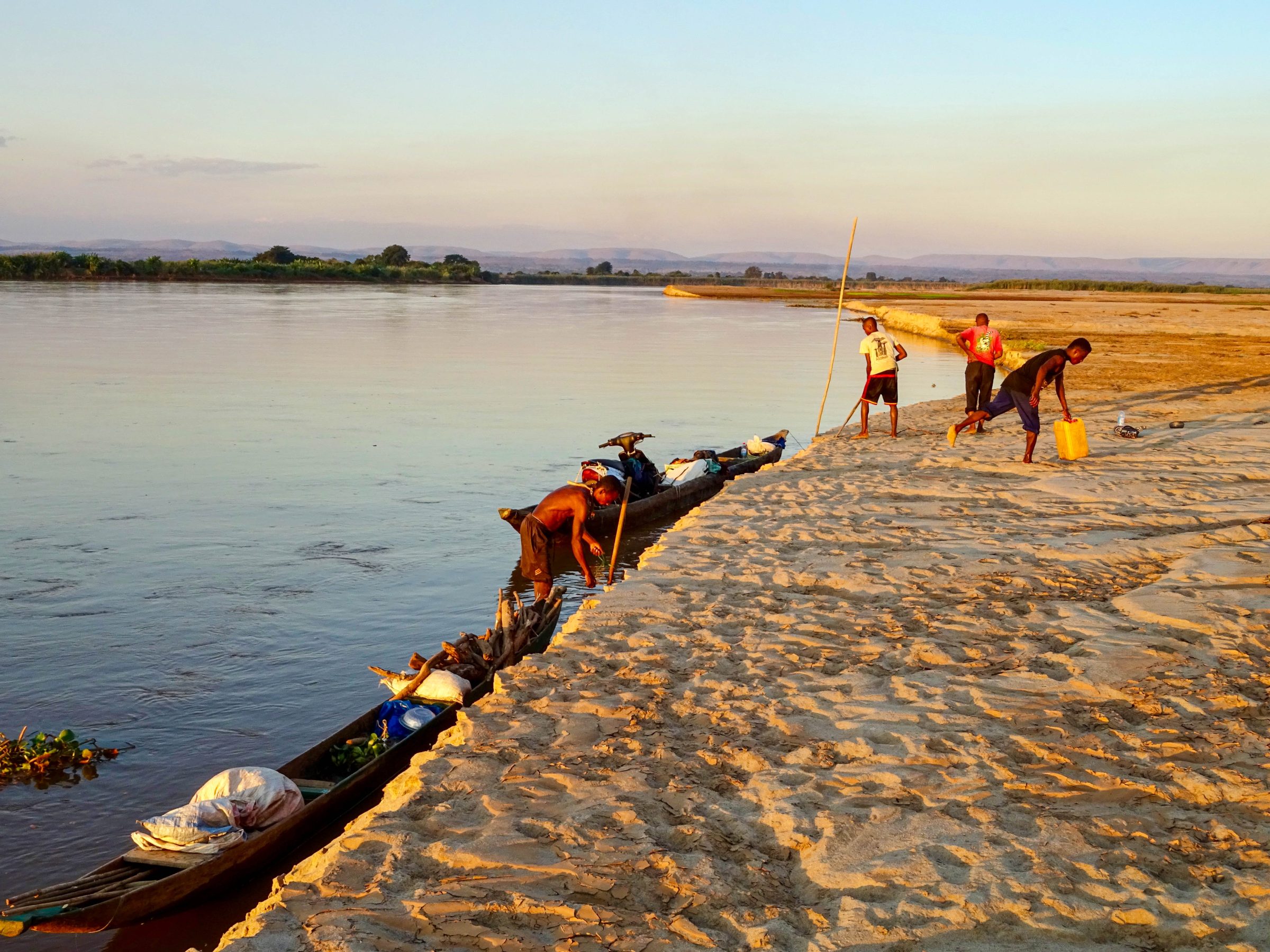
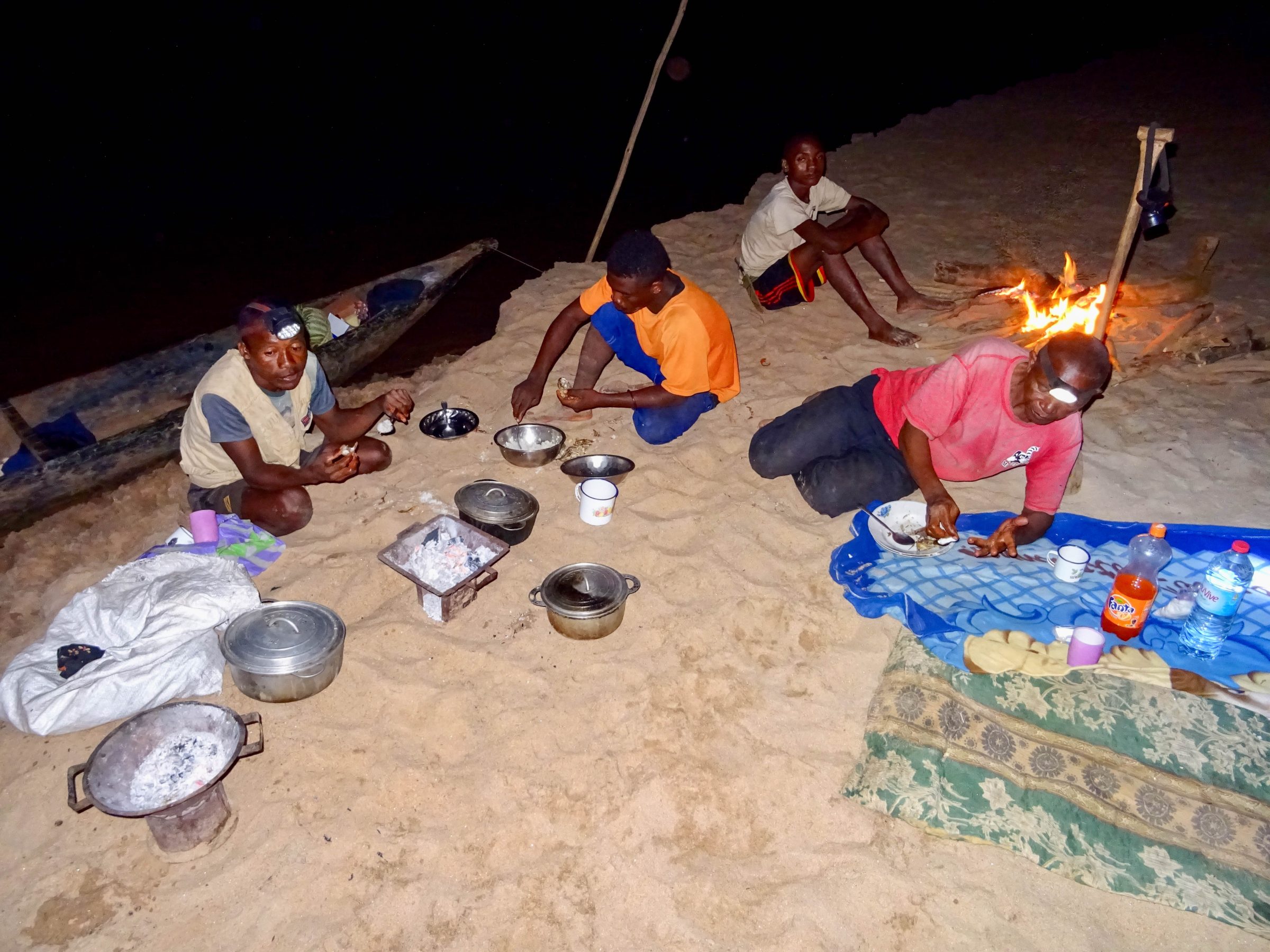
The last morning on the Tsiribihina river
Get up early is the motto. Gilbert has breakfast ready at seven. Then he clears up all the pans and pots again, while the fisherman sits on his talking chair. His mood is great. Today he plans to return home after one last fishing trip. We sail together for half an hour. Then we say goodbye to the fisherman.
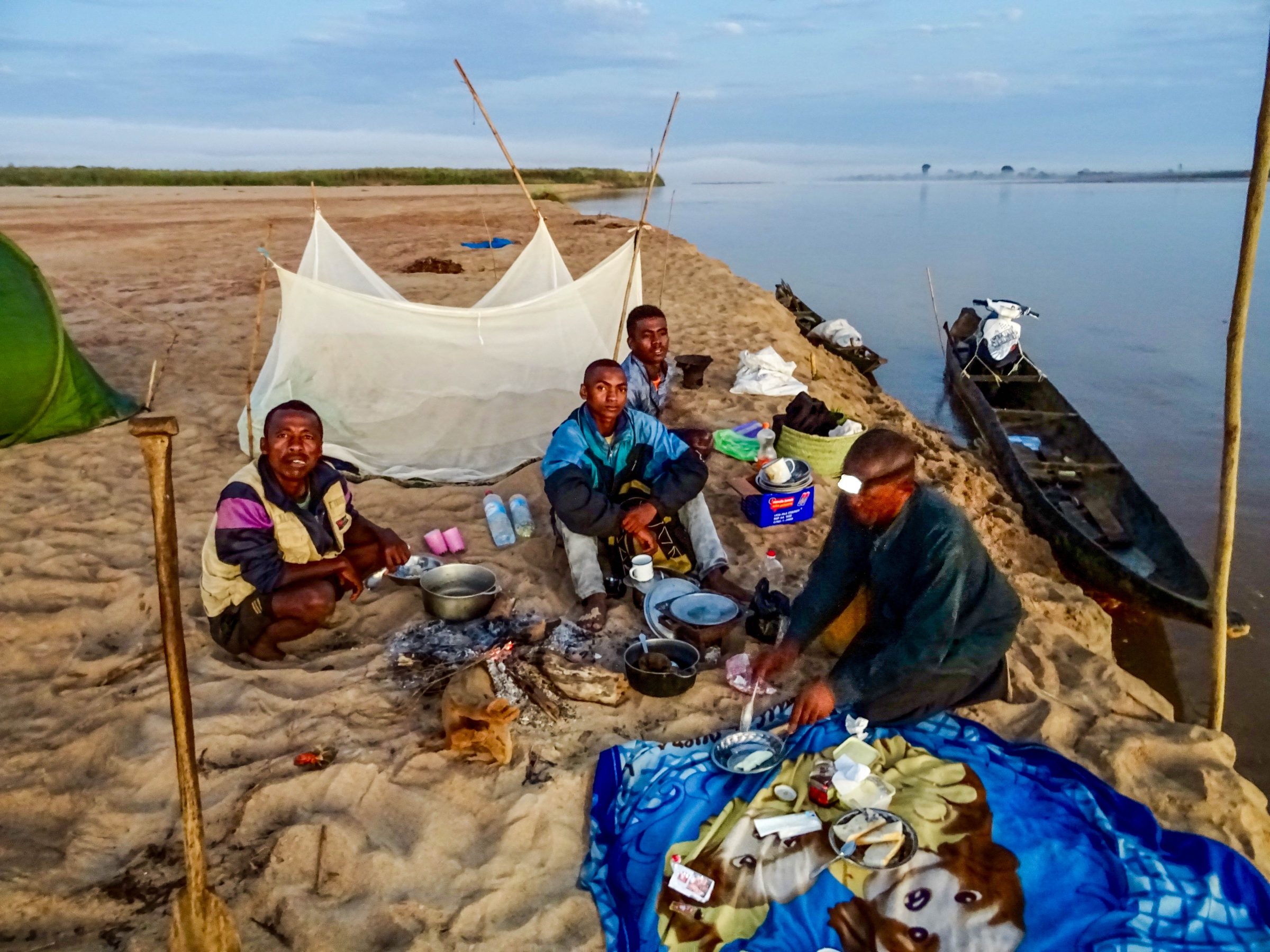
The morning starts chilly, but the sun quickly gains strength. There is not much current and the paddlers have to work hard. Around ten we take a break and Gilbert again manages to spot a beautiful chameleon. This time it is green and not so aggressive. "Here, I've got a dead grasshopper," Gilbert says. "Hold it about five centimeters from his mouth."
"Wow!" I exclaim as the chameleon rolls out its long tongue to swallow the grasshopper.
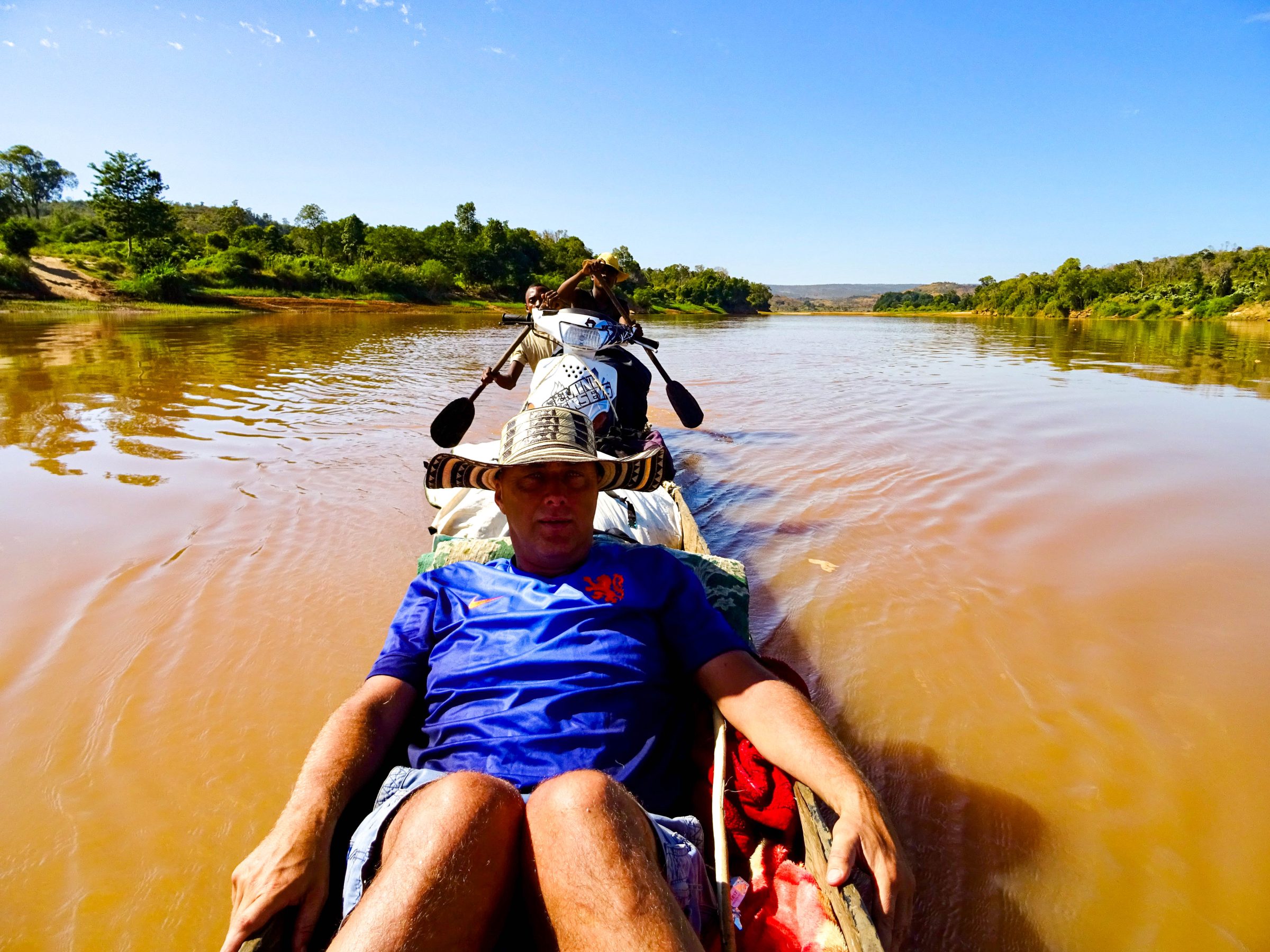
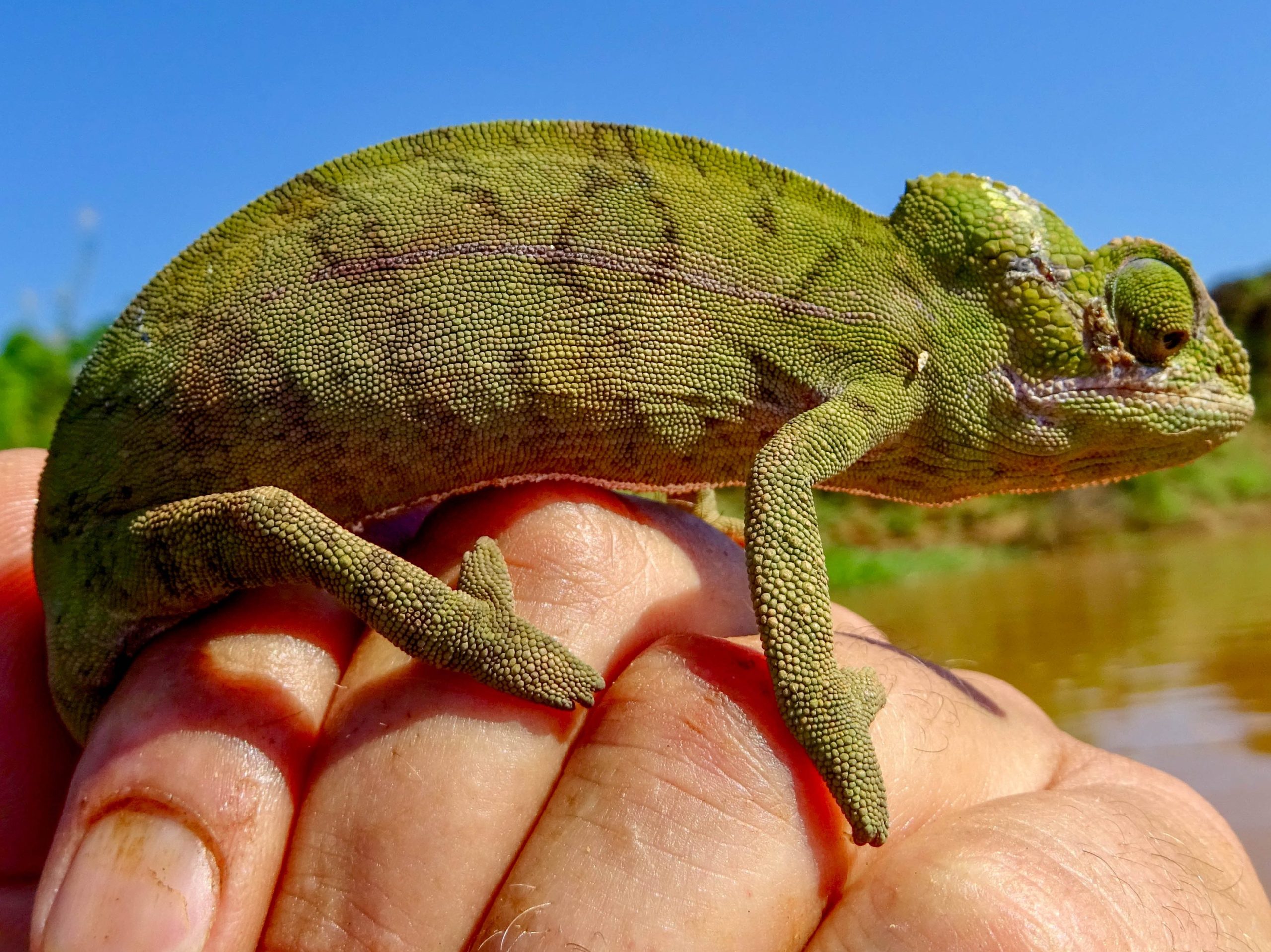
At eleven o'clock it is finally time. The first boat in more than two days sails towards us. "He fetches and brings villagers and provisions," Gilbert reports. 'They always do that upstream, because no tourists travel from Belo-sur-Tsiribihina to Miandrivazo. Tourists only travel downstream.'
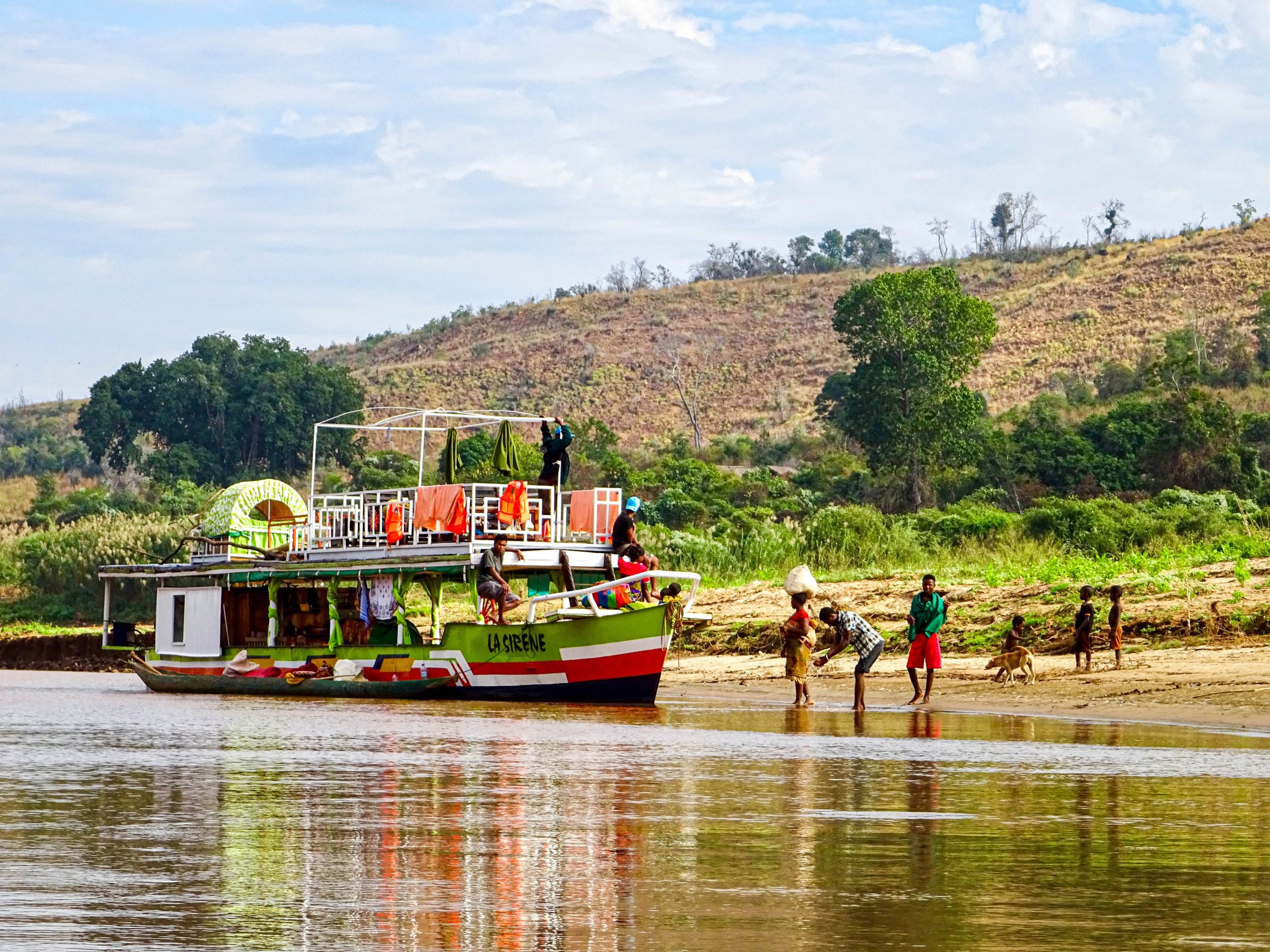
Arrival in Tsaraotana and watery petrol
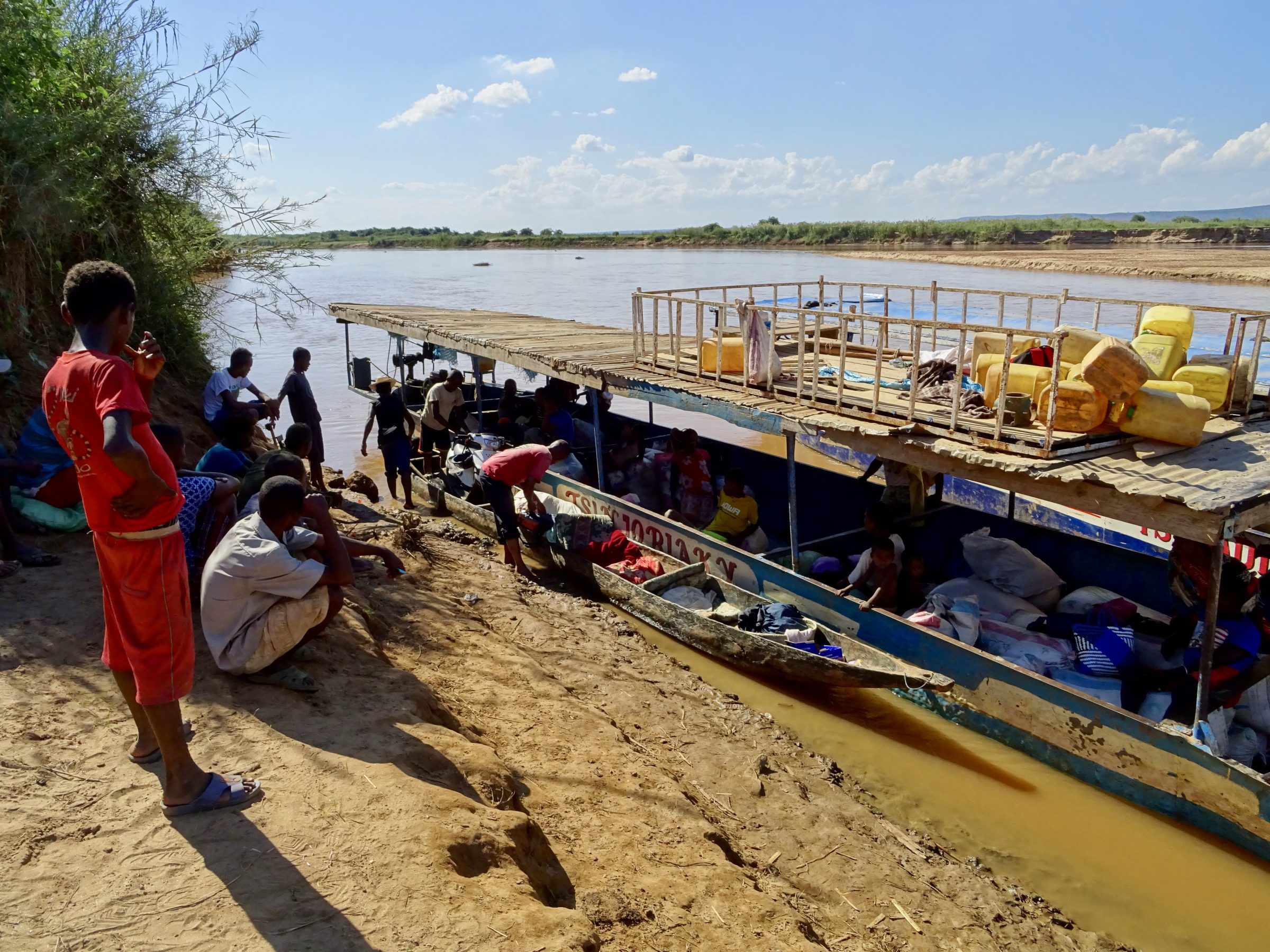
At a quarter to three the canoe trip is finally over. 'This is the end point. From here it's about thirty kilometers to the ferry to Belo-sur-Tsiribihina.' 'What?' I ask surprised. "I thought we'd sail there."
According to Gilbert, this is always the case. 'Only motorboats sail on. The canoes return from here.' The scooter is hoisted out of the canoe and put on the shore. Gilbert jumps on the back and escorts me to a cabin where gas is sold. We leave Tsaraotana with a full tank. Unfortunately, the dirt road is hardly passable and with Gilbert on the back it doesn't work at all.
After half an hour of plodding through the sand and mud we reach the village of Andranomandeha. There I say goodbye to Gilbert, who hopes to get a lift towards Belo.
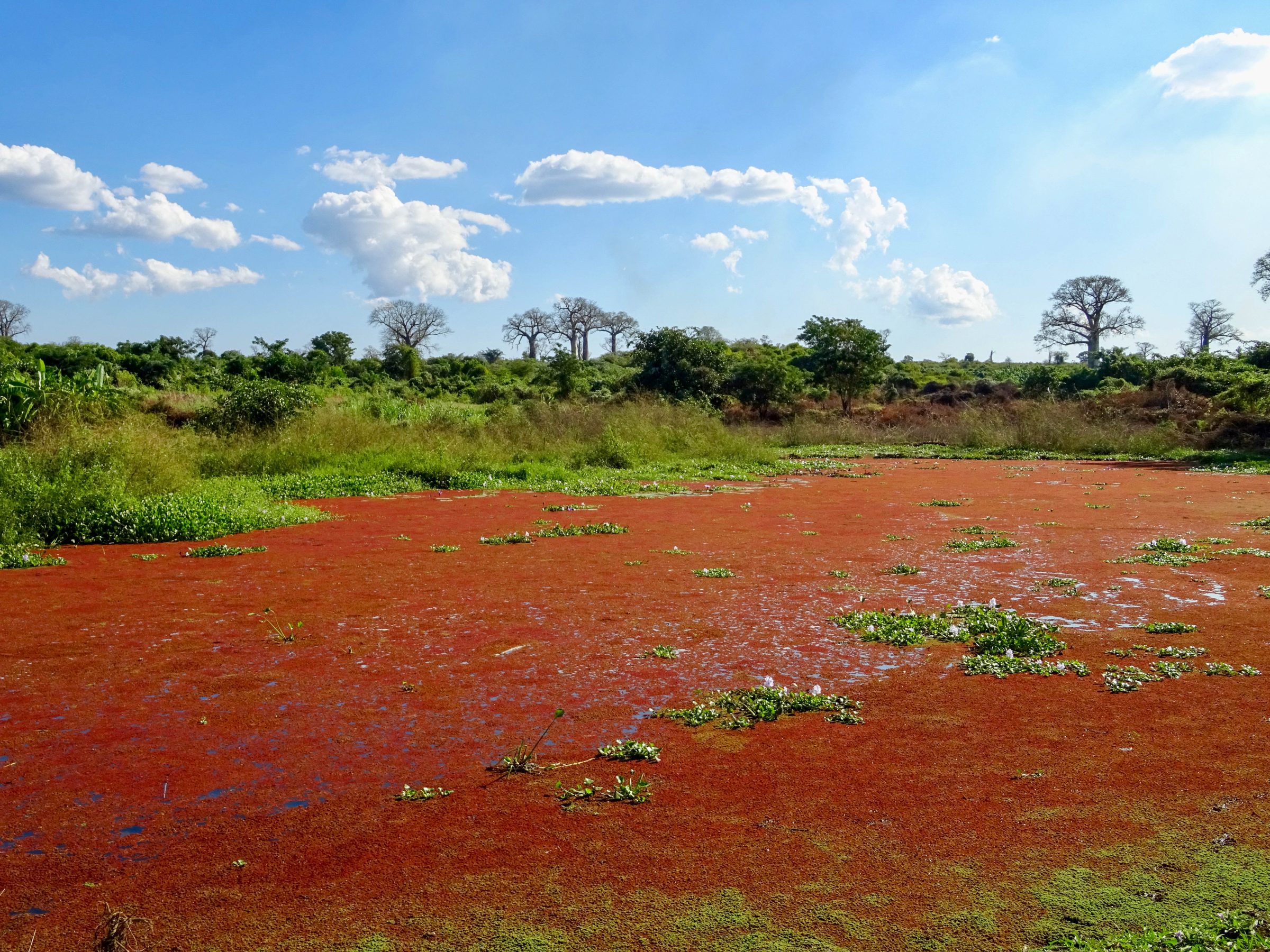
At about five o'clock disaster strikes. Initially I suspect that too much dust and mud got into the scooter. On closer inspection, there is not a drop of petrol left in the tank. It is impossible that I can only drive fifteen kilometers with four liters of petrol. (In Belo I later learn that the fuel is often tampered with in the villages. 'They add a lot of water. You can't see that.')
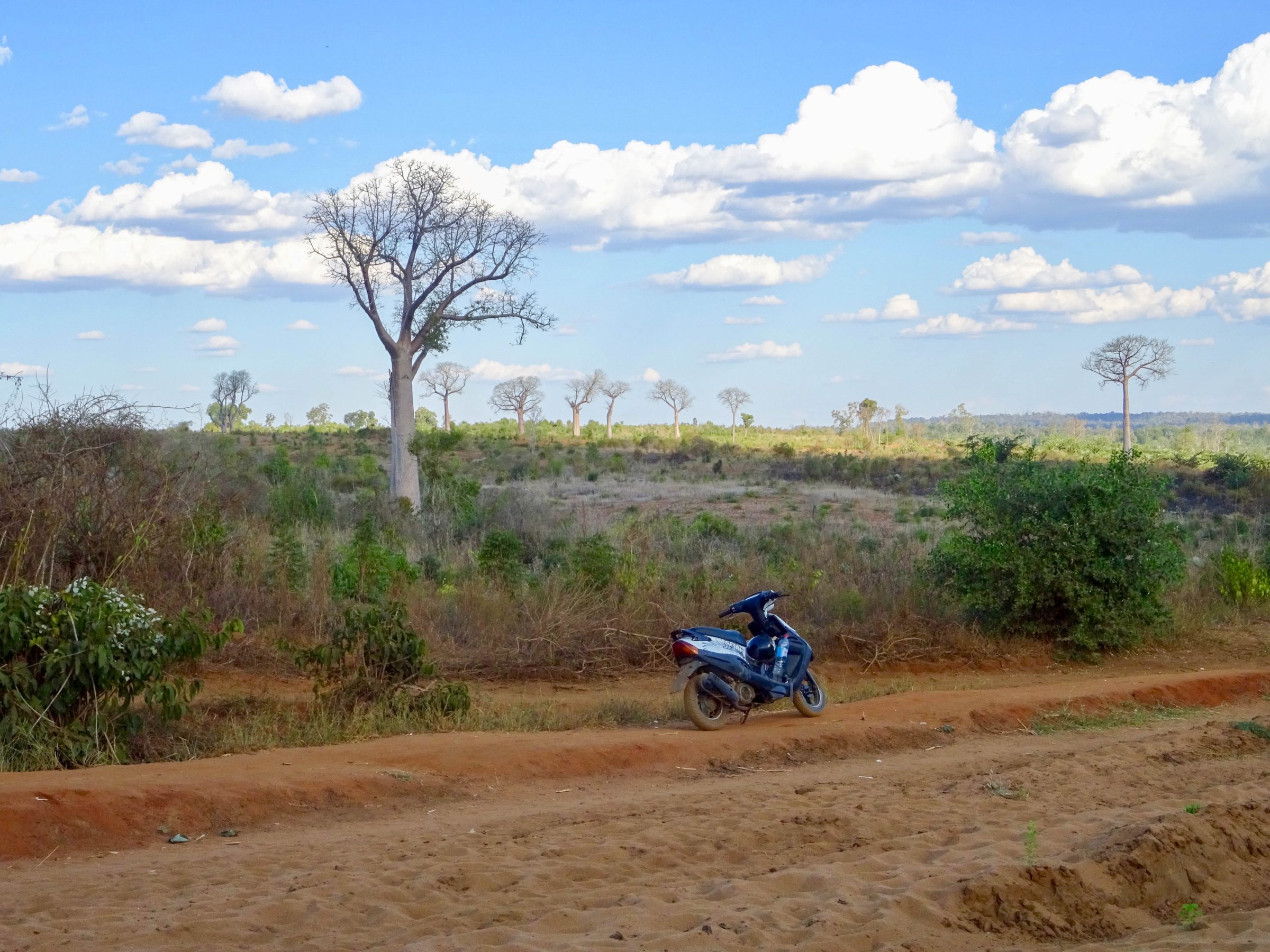
Since I left Andranomandeha, I haven't seen any sign of life. I am quite far from the river and therefore consider the chance of a settlement small. There is nothing for it but to push the scooter forward. That is a very tiring job. About seven o'clock I finally meet a shepherd with a herd of zebus.
He has bad news for me. The last ferry leaves at eight o'clock. 'It's an hour's walk from here. And maybe longer if you have to push the scooter.'
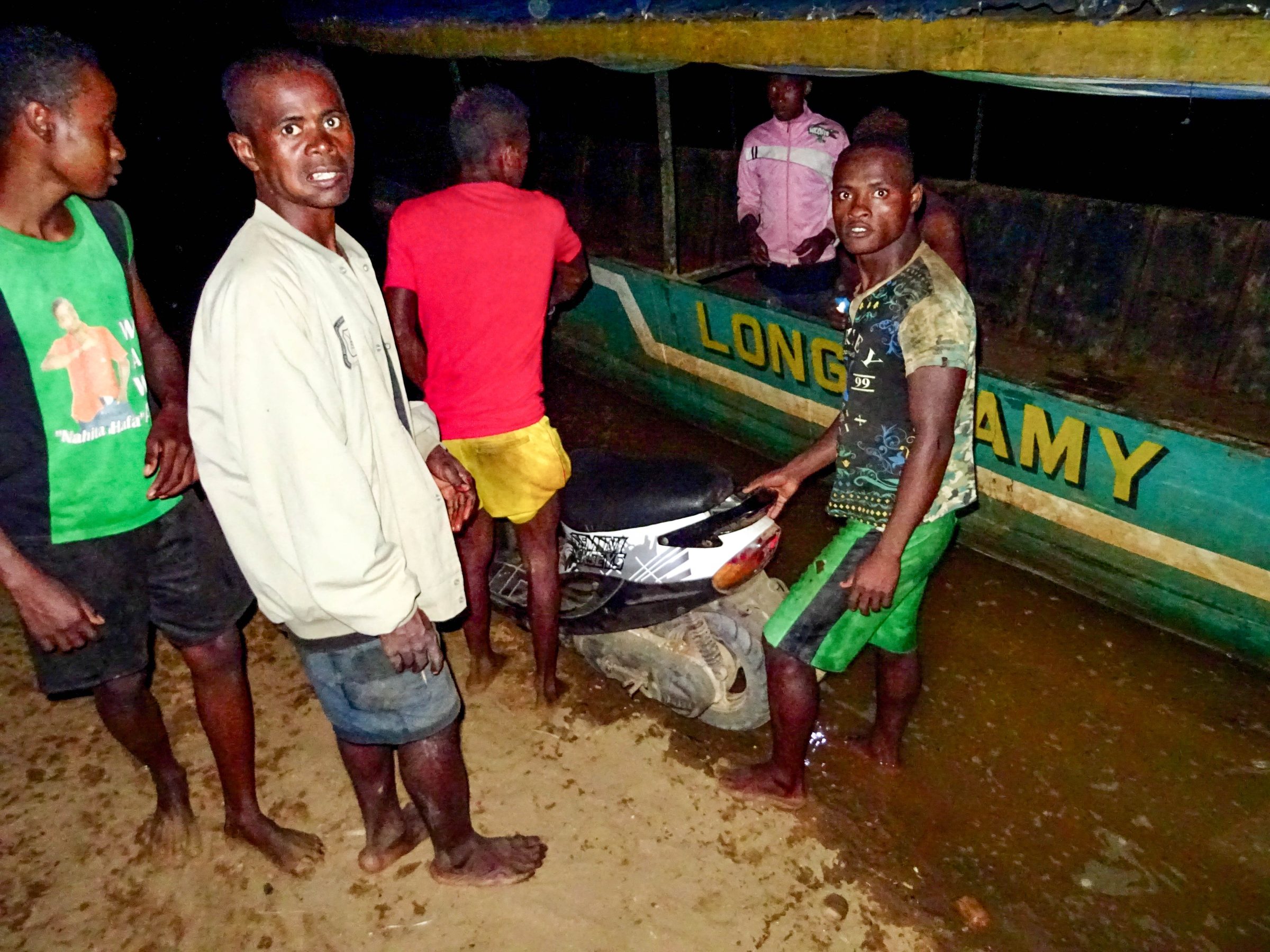
A fantastic dinner at Mad Zebu
In the pitch dark I arrive at the river. It is almost nine o'clock and the last ferry left an hour earlier. Fortunately there is a motor canoe, who is willing to bring me for a small fee. Ten minutes later I am in Belo-sur-Tsiribihina. There I take up residence in the Hotel du Menabe.
The owner immediately asks if I am with a company. When I answer that I'm on a scooter, she starts laughing. 'Unbelieveable. But huh? You don't think you can get to Tsingy on a scooter, do you? Forget it. That's really impossible. Only local guides know how to get there with an all-terrain vehicle.'
I decide to have a bite to eat first. For that I have come to the right place in Belo-sur-Tsiribihina. According to the Lonely Planet, here is the best restaurant in all of Madagascar: Mad Zebu.
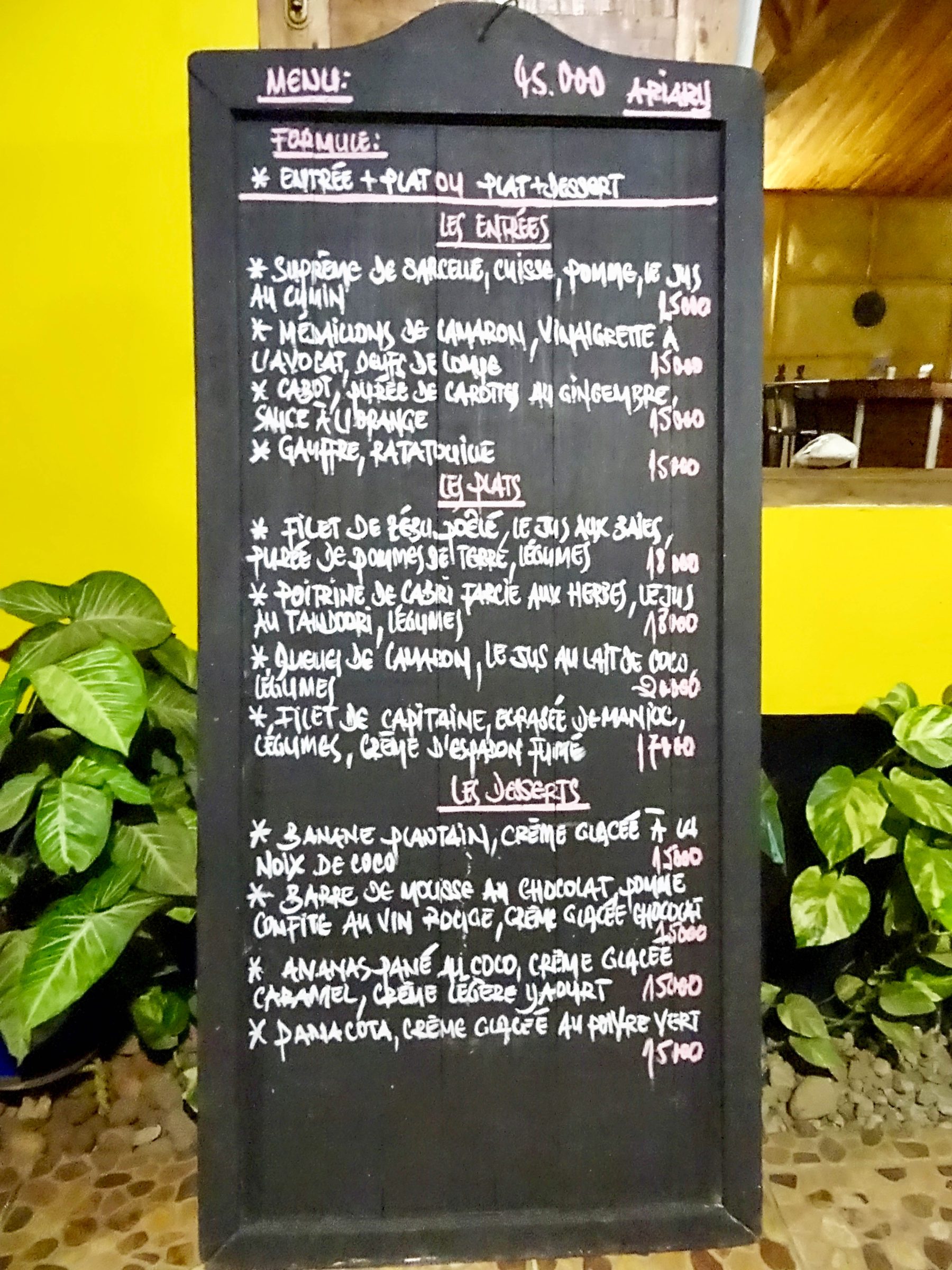
Also on Tripadvisor I find rave reviews about the 'Mad Zebu'. From the menu spelled in chalk I choose a delicious three-course menu. It tastes really delicious and I immediately agree with the reviews.
Back at the hotel I find it. The owner tells me that a young lady has just arrived with two guides. 'She works for Petit Futé. That's the French Lonely Planet.' I arranged it in five minutes. Tomorrow I leave with her and two guides to Bekopaka to visit Tsingy.
Also read:
- Madagascar on a scooter | Part 1 | Antananarivo (Tana) – introduction
- Madagascar on a scooter | Part 2 | Antananarivo (Tana) – Antsirabe (175 km)
- Madagascar on a scooter | Part 3 | Antsirabe – Miandrivazo (220 km)
- Madagascar on a scooter | Part 4 | Tsiribihina river canoe trip – Belo-sur-Tsiribihina
- Madagascar on a scooter | Part 5 | Excursion + Boat Trip in Bekopaka and Tsingy
- Madagascar on a scooter | Part 6 | Belo-sur-Tsiribihina – Kirindy Village (60 km)
- Madagascar on a scooter | Part 7 | Spotting Baobabs & Kimony Resort
- Madagascar on a scooter | Part 8 | Morondava – Malaimbandy (155 km)
- Madagascar on a scooter | Part 9 | Malaimbandy – Antsirabe – Ambositra (450 km)


